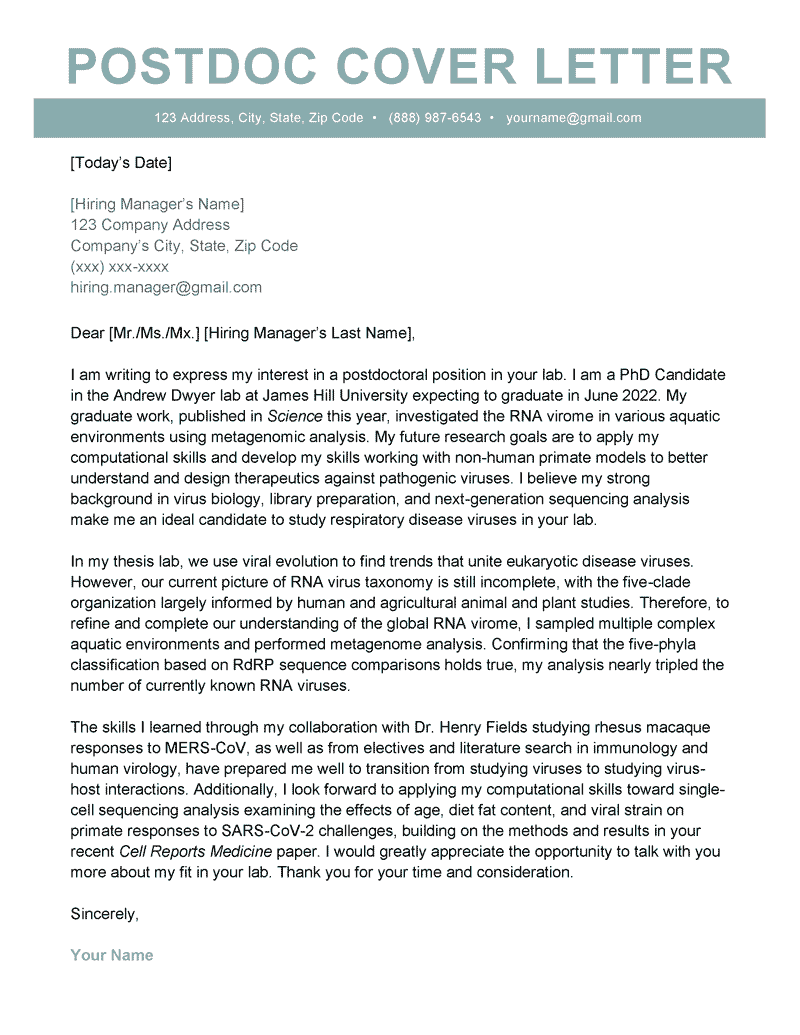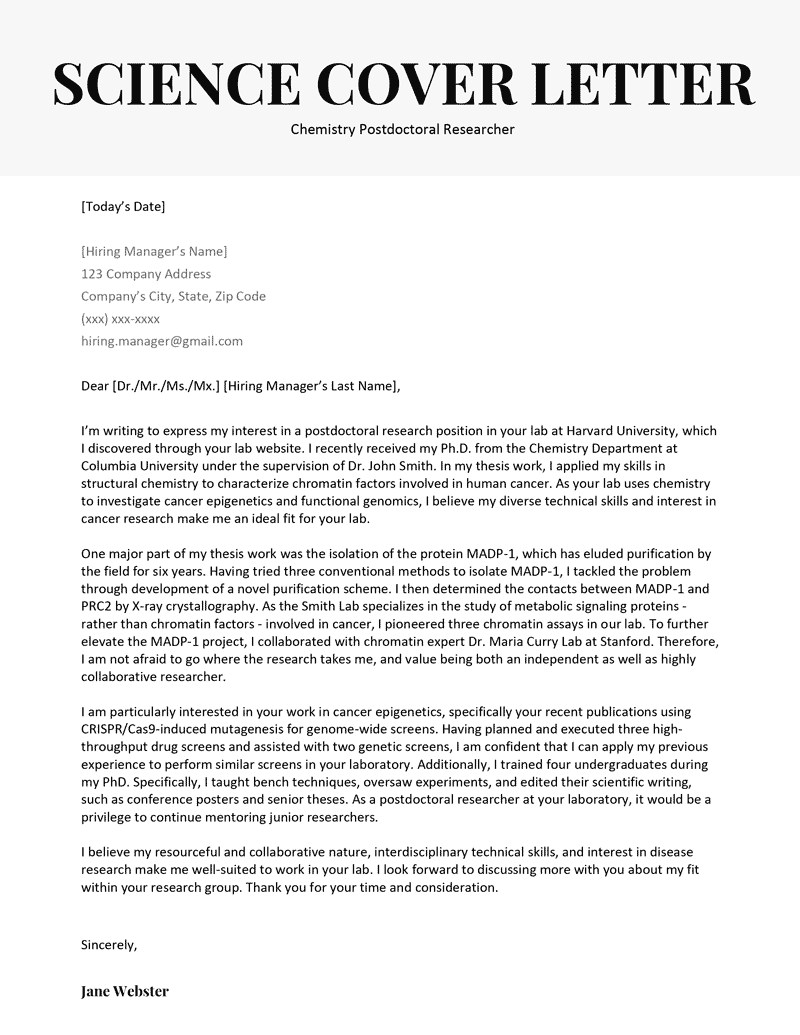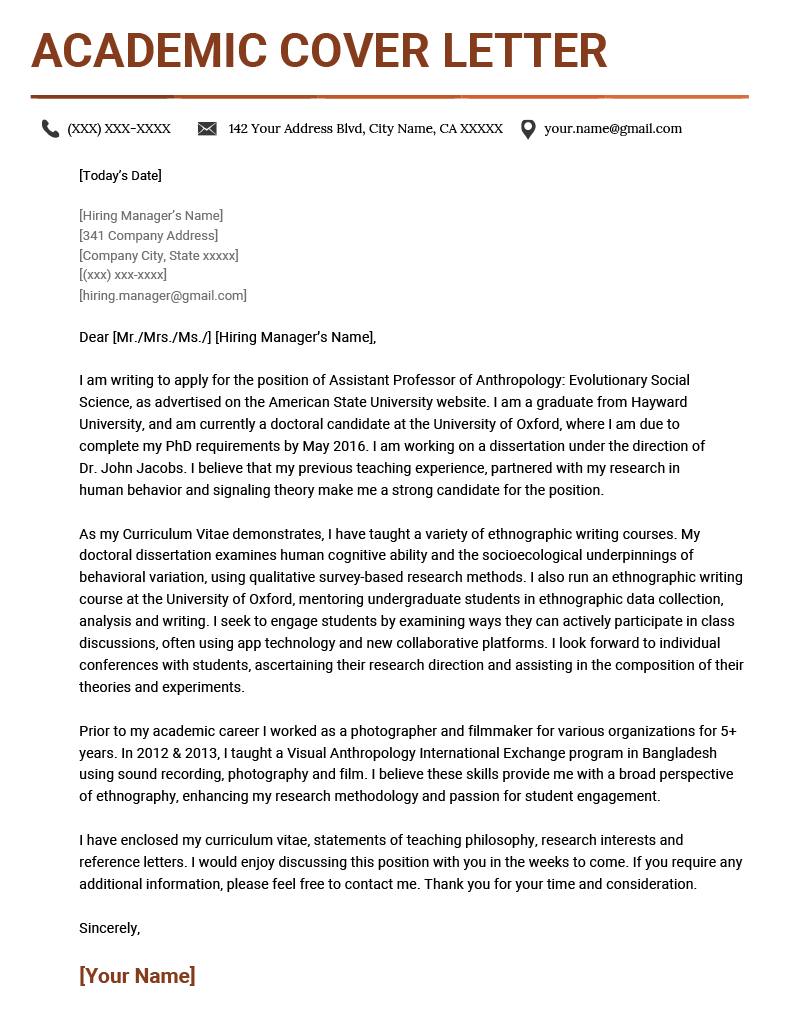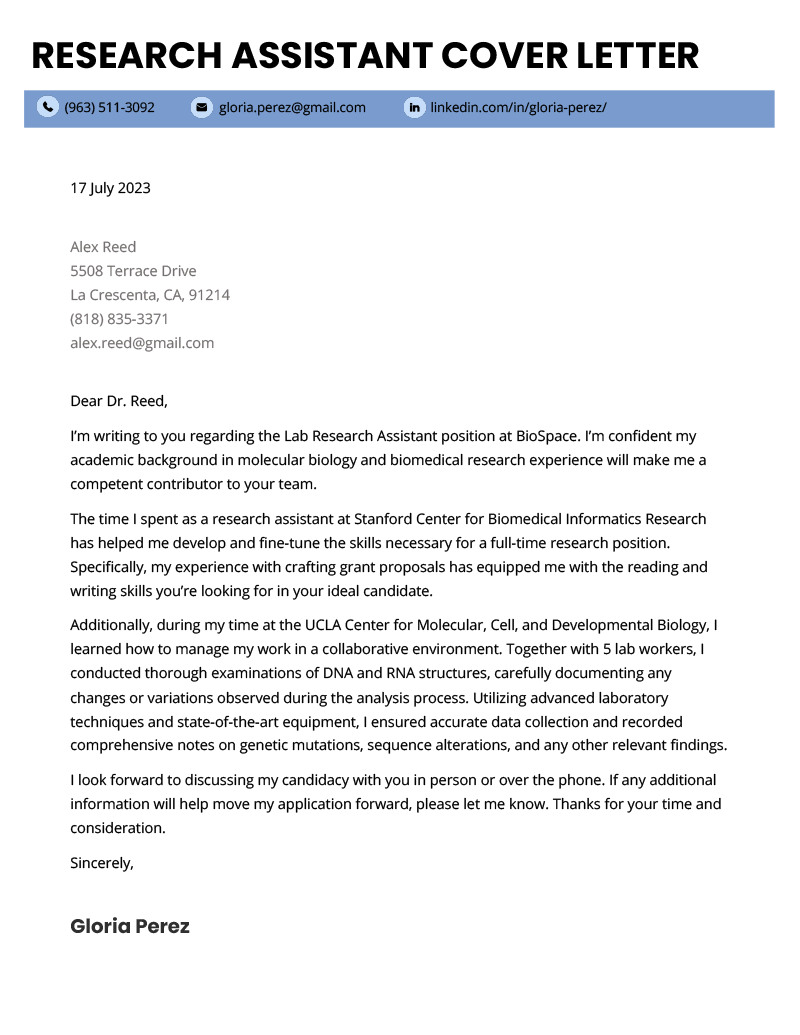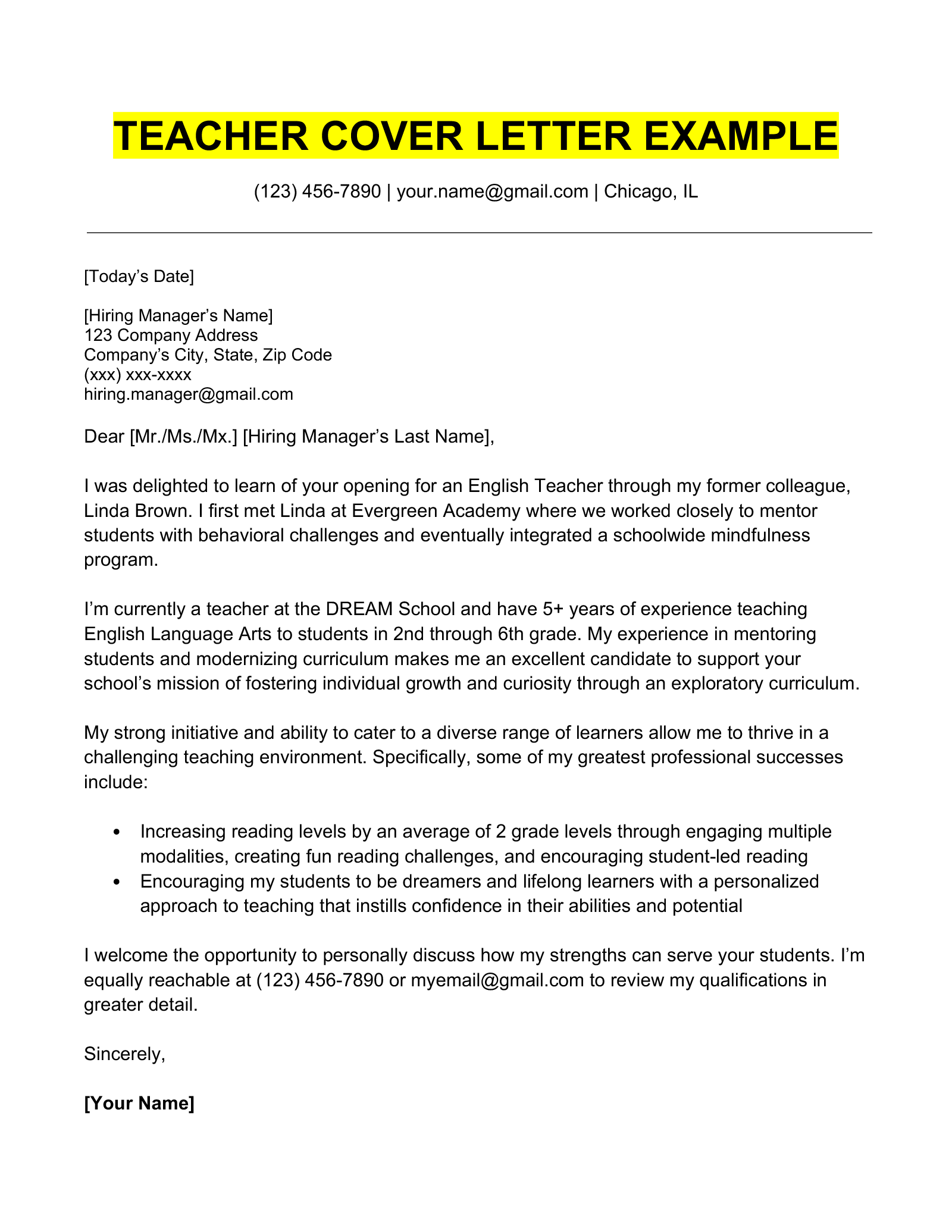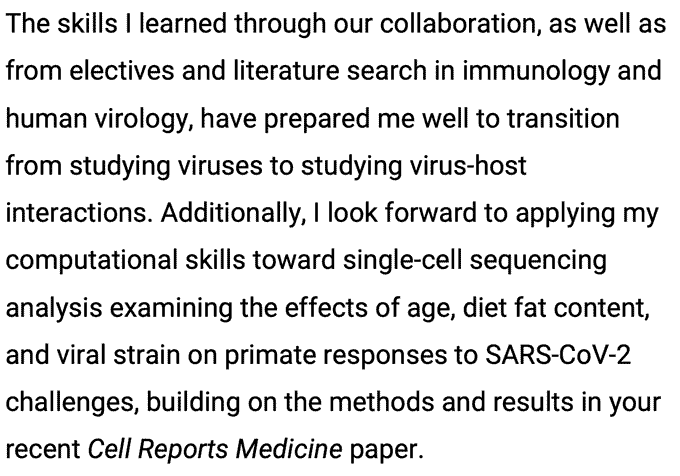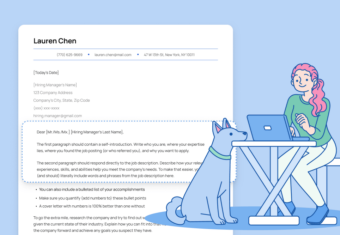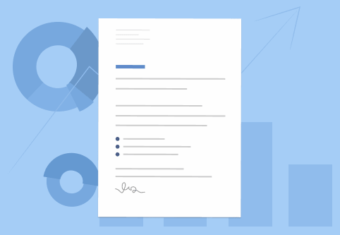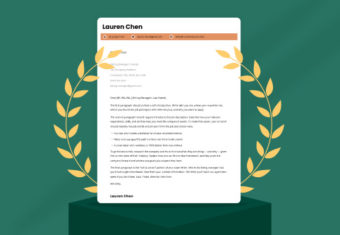Postdoc Cover Letter Template (Text Format)
FIRST AND LAST NAME
Email: your.email@email.com
Phone: (123) 456-7891
Address: Street, City, State
LinkedIn: linkedin.com/in/yourprofile
[Today’s Date]
[Hiring Manager’s Name]
[123 Company Address]
[Company City, State xxxxx]
[(xxx)-xxx-xxxx]
[hiring.manager@gmail.com]
Dear [Dr./Mr./Ms./Mx.] [Hiring Manager’s Last Name],
I am writing to express my interest in a postdoctoral position in your lab. I am a PhD Candidate in the Andrew Dwyer lab at James Hill University expecting to graduate in June 2022. My graduate work, published in Science this year, investigated the RNA virome in various aquatic environments using metagenomic analysis. My future research goals are to apply my computational skills and develop my skills working with non-human primate models to better understand and design therapeutics against pathogenic viruses. I believe my strong background in virus biology, library preparation, and next-generation sequencing analysis make me an ideal candidate to study respiratory disease viruses in your lab.
In my thesis lab, we use viral evolution to find trends that unite eukaryotic disease viruses. However, our current picture of RNA virus taxonomy is still incomplete, with the five-clade organization largely informed by human and agricultural animal and plant studies.
Therefore, to refine and complete our understanding of the global RNA virome, I sampled multiple complex aquatic environments and performed metagenome analysis. Confirming that the five-phyla classification based on RdRP sequence comparisons holds true, my analysis nearly tripled the number of currently known RNA viruses.
Host assignment proved to be tricky during my thesis. But I tackled this problem through various methods, including developing machine learning algorithms and comparing RNA viruses to size-separated microbial preparations subjected to DNA and RNA sequencing. I am continuing to characterize the novel and more highly divergent RdRPs discovered by our sampling. Also I mentor one graduate and one undergraduate student with their independent projects drawn from my work.
While I have focused primarily on RNA virus ecology and evolution during my graduate work, I am comfortable extending my research to studying RNA viruses in human disease. I collaborated with Dr. Henry Fields on a publication, currently under review at Frontiers in Immunology, studying rhesus macaque responses to MERS-CoV. The skills I learned through our collaboration, as well as from electives and literature search in immunology and human virology, have prepared me well to transition from studying viruses to studying virus-host interactions. Additionally, I look forward to applying my computational skills toward single-cell sequencing analysis examining the effects of age, diet fat content, and viral strain on primate responses to SARS-CoV-2 challenges, building on the methods and results in your recent Cell Reports Medicine paper. I would greatly appreciate the opportunity to talk with you more about my fit in your lab. Thank you for your time and consideration.
Sincerely,
Your Name


